 In Memoriam - Robert W. Ledeen In Memoriam - Robert W. Ledeen
1928 - 2024
Dr. Robert W. Ledeen was the Faculty Member of the NJMS Department of Pharmacology, Physiology & Neuroscience.
Dr. Ledeen joined the faculty of NJMS in 1991, first as a member of the Department of Neurology & Neuroscience under Dr. Stuart Cook, and more recently in our Department. Prior to that he had been a faculty member at Albert Einstein College of Medicine for 30 years. Dr. Ledeen was a graduate of the University of California - Berkley and did his PhD at Oregon State University, followed by postdoctoral appointments at the University of Chicago, Mount Sinai and Einstein. He was trained in chemistry and biochemistry and brought those skills to bear on neuroscience and neurochemistry, focusing over most of his career on the role of gangliosides and related lipids in the nervous system. During his time at NJMS, Dr. Ledeen turned his attention to the role of gangliosides in multiple sclerosis and Parkinson's disease. He was an eminent scientist in his field, with over 200 publications to his name, including his most recent paper on the relationship between alpha-synuclein and GM1 ganglioside in Parkinson's disease, which was published earlier this year. Dr. Ledeen was 96.

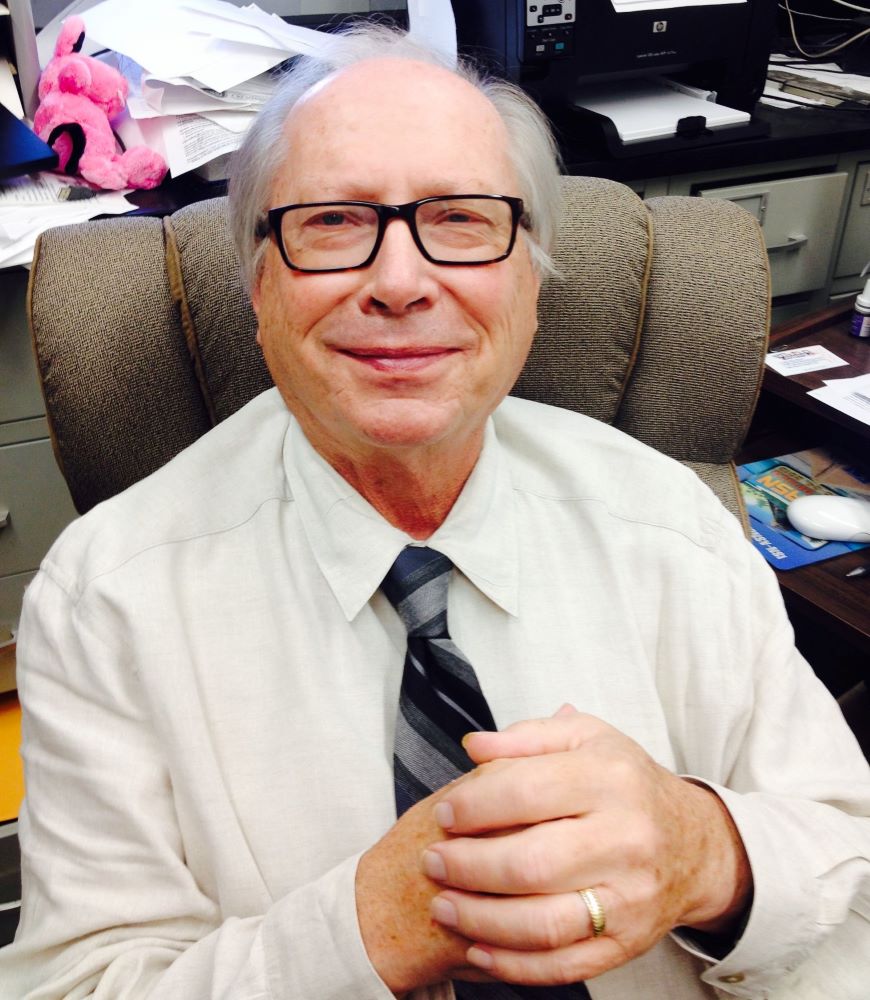
In Memoriam - Robert Paul Skoff
1942 - 2023
The ASN lost a great friend and contributor to the society with the recent passing of Bob Skoff. He was a regular participant in the annual ASN meetings and made major contributions to the field of developmental neuroscience. For most of his career he was appointed as Professor of Anatomy and Cell Biology at Wayne State University School of Medicine. He served on the editorial board of ASN NEURO, the official journal of the ASN, in addition to the editorial boards of several other major neuroscience journals.
His research interests spanned many fields of developmental neuroscience including neuroglial cell lineages, regulation of astrocyte and oligodendrocyte differentiation, genetic mutants that affect myelination and the mechanism of action of growth factors on neuroglial differentiation. He was the first to show gender differences between male and female oligodendrocytes. He promoted the novel hypothesis that insertion of proteolipid protein in excess into mitochondria may underlie oligodendrocyte death in overexpressing transgenic animals and Pelizaeus-Merzbacher patients.
Until his retirement in 2020 he served as a reviewer for NIH as well as the National Multiple Sclerosis society and other neuroscience funding agencies. His research was well supported by NIH and other major agencies for his entire career. He trained a number of graduate students and postdoctoral fellows (including many ASN members) who have gone on to their own neuroscience careers. He published over 80 high quality papers in addition to 24 review articles, chapters and editorials. He also co-edited a full-length book on Myelination and Dysmyelination and a manual on Modern Imaging Techniques for Cellular and Molecular Neurobiology prepared for the ASN. Several of his papers were cited over 200 times.
Institutions all over the world invited him to be a guest speaker. He successfully launched the US Great Lakes Glia meeting twenty years ago; the meeting now attracts an international audience.
In addition to his highly regarded reputation as an outstanding scientist, he was always ready and willing to give his advice and time to younger scientists. His peers always looked forward to stimulating conversations with him at the annual ASN meetings. He was a food epicurean and would cook gourmet dinners for his friends at his cabin in the northern Michigan woods. His presence will be sorely missed. He is survived by his wife Anne and 3 children.

 In Memoriam- Dr. Robert K. Yu In Memoriam- Dr. Robert K. Yu
1938 - 2022 ASN is sad to announce the recent passing of Robert “Bob” Yu. Bob was a former ASN President and Councilor, and an eminent scholar in the field of gangliosides. He was a brilliant scientist known and respected internationally. His research garnered an h-index of 62. Bob had a delightfully warm personality which enticed countless trainees to pursue research in neurochemistry and become lifelong ASN members. He attended nearly all the ASN annual meetings discussing research, greeting old friends, and making new ones. He will be missed immensely. Bob’s family has expressed a desire to establish a Robert K. Yu, Ph.D. endowed ASN lectureship to honor him. In addition, his family has graciously invited anyone who wishes to join the funeral. The funeral service for Dr. Robert Yu will be held on Thursday, May 26, 2022, at 2:00 - 4:00 p.m. at Rowland-Ford Funeral Home. The family will receive friends at the funeral home beginning at 1:00 p.m.
Robert Yu Obituary (1938 - 2022) - North Augusta, SC.
Robert Yu Obituary - Tribute Archive
Gifts can be provided to the Robert K. Yu Memorial Fund (Wells Fargo). Zelle to robertkyumemorial@gmail.com
For those unable to attend Dr. Yu's funeral service, a livestream of the event will be posted at the following link just prior to the beginning of the service: https://livestream.com/rowlandford/events/10421395
Dr. Robert Yu interview (Jul 24, 2019)

 In Memoriam- Betty I. Roots In Memoriam- Betty I. Roots
October 21, 1927 - October 24, 2020
The neuroscience community has suffered a great loss with the passing of Betty Roots, a renaissance woman whose research interests included pioneering studies of invertebrate glial cells (particularly those found in earthworms), ultrastructural and biochemical changes in the nervous system, especially in myelin, as a consequence of changes in the environment. Betty was one of the first neuroscientists to use the goldfish extensively in her studies. She was particularly interested in the structure and function of glial cells and neuron-glia relationships from a phylogenetic point of view, especially regarding the evolution of glial membranes She published 100 papers in her scientific career and a dozen book chapters, mostly in high profile journals including Nature and well recognized neurochemistry journals. Betty also authored two books which ranged in topics from “Nerve Membranes” to “Flowers of Eastern Canada and the Northeastern United States” which was published in both French and English. In addition, she was the editor of two books dealing with neuron-glial interactions as well as a book on the ecosystems of the Toronto region.
Born in Surrey, England, she received her Ph.D. in Zoology from University College, London and held several academic positions in the U.S. before settling in Canada. Over the course of her career, she held a number of important administrative positions. She served as Professor of Zoology and Associate Dean (Sciences) at Erindale College. She then joined the faculty at the University of Toronto, where she earned the rank of Professor and became the first woman to chair the Department of Zoology. She was a gifted electron microscopist and belonged to the Canadian Microscopical Society. She was also a visiting Professor on the faculty of Medicine at the University of Riyadh, Saudi Arabia, teaching and serving as a consultant to the newly established Medical College for Women.
Betty was an early member of the ASN, presenting a paper on “The Fractionation of Neurons and Glia” at the first annual meeting of the society in 1970. She served on a number of ASN committees including: Committee for Neurochemistry and Public Policy, Membership Committee, Decade of the Brain Committee and was a member of the ASN Council for one term. She was a founding member and first chair of the “Women in Neurochemistry Committee” of the American Society for Neurochemistry (ASN) from 1992-1995. She was also active in a number of other professional societies including: International Society for Neurochemistry, Canadian Association for Neuroscience, and the Canadian Federation of Biological Sciences.
Betty’s career achievements are remarkable given the difficulties faced by women scientists in the mid-twentieth century. She received multiple prestigious awards for her scholarship, including a D.Sc. from the University of London in recognition of her research in the field of comparative physiology and neurobiology, the “Woman of the Year Award” by the Canadian Association for Women in Science, and the Queen’s Golden and Diamond Jubilee Medal (awarded to Canadian citizens who have made significant contributions to a particular province within Canada). Her most cherished award was being elected a Fellow of the Royal Society of Canada, whose members are distinguished men and women who have made remarkable contributions to the arts and sciences as well as public Canadian life.
In addition to science, Betty’s interests extended to photography. She received a number of awards for her photography including a Silver Medal from the Photographic Society of America. She founded the Roberta Bondar Foundation which, through photography, helps to cultivate in people of all ages a sense of awe, respect and appreciation for the many life forms that share our planet. She was also a member of the Royal Ontario Museum and an avid supporter of the World Wildlife Fund.
Her colleagues knew her as a warm engaging person who enthusiastically engaged in stimulating discussions on research and a number of other topics. Her mentorship and wise counsel to younger ASN attendees, women and men alike, were highly valued; her observations on the past and current status of women scientists enlivened the annual ASN Women in Neurochemistry lunch meetings. She took an avid interest in others and directed attention away from herself.
Betty is fondly remembered for her energy, robust personality and sense of adventure. Those who attended the ASN in Chichen Itza in 2014 remember her at the age of 87 taking the challenge of a group tour with a cave descent! She always had a smile on her face and a twinkle in her eyes and was always ready for a good laugh. Her presence will be sorely missed.
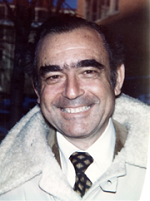 Soll Berl, PhD Soll Berl, PhD
1918 - 2020
Soll Berl was one of the founding members of the ASN, served on the ASN Council (1975-1981) and was a regular contributor to the annual ASN meetings. He recently passed away at the ripe old age of 101! He held degrees from St. John's University’s School of Pharmacy and the University of Wisconsin before his education was interrupted by World War II, during which he was part of a University of Wisconsin research effort to determine how to mass-produce penicillin for Allied troops. As an Army medic, he was stationed at William Beaumont General Hospital in El Paso, Texas, and after his discharge attended medical school at Case Western Reserve University in Cleveland. He completed a residency at New York University Bellevue Medical Center, and a National Institutes of Health postdoctoral fellowship at the New York State Psychiatric Institute. He began his scientific career in 1952 when neurochemistry was in its infancy without any designated journal, meetings or societies dedicated to this discipline. He joined the laboratory of Heinrich Waelsch at Columbia University in New York, who was a founding father of both the Journal of Neurochemistry and the International Society for Neurochemistry. Soll initial research focused on glutamate metabolism in brain. In 1962 he published a landmark paper which demonstrated that the metabolic pathway of glutamate known as the glutamate-glutamine cycle is compartmentalized in brain. In retrospect, this was the first evidence of metabolic interplay between the neurons and astrocytes. Soll’s hypothesis that glutamate metabolism is compartmentalized in brain was a major contribution not only in brain metabolism, but led to the discovery of metabolism compartmentalization in other tissues as well. After the death of Waelsch his mentor, he joined the department of Neurology at the Mount Sinai School of Medicine in 1974. There, Soll established a very active neurochemistry laboratory focused mainly on amino acid and ammonia metabolism in the brain. He also investigated the role of actomyosin-like proteins in brain. His last publication in 1989 dealt with the role of fibronectin in neurite growth cones. During his entire career he published 100 peer reviewed papers. His collaborators included Donald Clarke, William Nicklas, Saul Puszkin, and Abel Lajtha. He was the recipient of multiple awards, starting in 1950 by the Borden Undergraduate Award in Medicine for research carried out during his time at Case Western, then a National Institutes of Health Research Career Development Award from 1962 to 1972, and the Lucy G. Moses Award for Research in Neurochemistry from Columbia in 1970.
An amateur artist who painted, sketched, and did woodworking, Dr. Berl was also a keen tennis fan and played the game well into his 80s. He loved literature and the theater, too, and was admired by all for the soups, pies, and salads he would make. When he retired, Dr. Berl joined his wife in restoring an old classic farmhouse in Claverack in the Hudson Valley. It became the Martindale Inn, a bed-and-breakfast, and enabled the couple to meet and befriend many people from all over the country. After almost 20 years as innkeepers, the two traveled extensively and divided their time between the Amagansett house and Vermont and North Carolina.
Andrew Plaitakis (a postdoctoral fellow of Soll Berl) remembers him as an ideal mentor: kind, knowledgeable and highly inspirational. Abel Lajtha recalls Soll Berl as a friend, and a quiet, interesting, helpful and a knowledgeable researcher who collaborated well with others. His family noted that Soll will always be remembered by them and many friends as a gentle and compassionate man of great integrity, with a ready wit and unwavering love of life.
By Historians George DeVries and Anne Boullerne
Claude Baxter, PhD
1923 - May 24, 2018
Claude Baxter passed away on May 24, 2018 in Northridge, California, United States. Claude was born as Klaus Friedrich Bachrach in Hamburg, Germany, in 1923. His family emigrated to England in 1935, just ahead of WWII. In 1941, after enemy bombs destroyed their London home and his father’s workplace, the family emigrated to the United States. After a stint as a dairy farmer, he became an officer in the US Army, serving in Europe first as a tank commander, and then in Army counterintelligence. Following WWII, Claude earned a Ph.D. through studies at UC Berkley and UC Davis with Dr. Max Kleiber, followed by research at Johns Hopkins University, City of Hope Medical Center, and the Veterans Administration. He had a distinguished career as a research neurochemist, including ground-breaking discoveries relating to the neurotransmitter GABA.
Claude was an officer and founding member of both the American and International Societies for Neurochemistry. He loved to teach and mentored many graduate students, some of whom remained friends for decades. He retired as Director of Neurochemistry Labs at the Veterans Administration Hospital in Sepulveda, CA.
An avid skier, equestrian, camper, naturalist, advocate for human rights, music lover, and family man, Claude’s enthusiasm for life triumphed over many obstacles. He wrote musical skits for family events, honoring loved ones with new lyrics to familiar tunes from his beloved operas and operettas. After disability reduced his professional activities, he began writing stories at age 80, producing four volumes of memoirs. Those memoirs have been and will continue to be appreciated by those who loved him, as they deepen the reader's understanding of who he was and revive memories of his wonderful zest for life.
Claude’s family, friends, and colleagues will deeply miss his integrity, wit, unbounded curiosity, humility, thoughtful wisdom, and tender affection. A celebration of life will be held on November 11. For details contact Diane Baxter invitations@forevermissed.com.
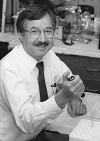 Jean de Vellis Jean de Vellis
1935 - 2018
The passing of any person always brings dismay, sadness and the sense of permanent loss. Hence, it is difficult if not impossible to avoid these sentiments when writing this tribute to a person like Jean de Vellis. For those of us who had the honor and privilege of knowing and working alongside him, Jean meant more than a simple professor, more than a creative scientist, more than an outstanding colleague, more than just another boss. Jean was a fatherly and wise man who forever touched the heart and enlightened the minds of uncountable people during his 60 years of work and service for the advancement of science and the formation of researchers. His scholars, colleagues, and friends will miss him deeply and we all share in the sadness of Jean’s wife Phyllis, and his children, Genevieve and Phillip.
Meeting Jean was an adventure in itself. There was always the contrast between the quick smile of recognition and a twinkle in the eyes when you encountered him, and the thoughtful pause before addressing a difficult problem. With his characteristic demeanor, Jean would face any crisis with a rare mix of optimism, foresight and acceptance that life deals both good and bad hands. He would always remind us that it is up to ourselves to move forward in front of adversity. This pragmatic optimism in his conduct always felt natural, magnetic, iridescent. Jean had limitless faith in people, believing in our capacity to surpass the unsurpassable, and to constantly remake ourselves into something better, greater and more powerful. He would encourage, support, praise and believe in the potential of people, especially the young, and remarkably, those coming from dire socio-economic conditions. Jean’s energy was contagious and an endless reminder that we all have the seed in ourselves to bloom into beautiful flowers. Not surprisingly, Jean was an excellent and patient gardener.
During his illustrious career, multiple societies, institutes, and boards, including the American Society for Neurochemistry, the International Society for Neurochemistry, the Winter Brain Conference, the Institute for Developmental Neuroscience and Aging, the Christopher Reeve Paralysis Research Foundation, and the Mental Retardation Research Committee of the NICHD enjoyed from Jean’s keen mind and expert advice. Jean was an editor for the Journal of Neuroscience Research (JNR) from 1980 and Editor-in-Chief from 1999 until 2015, remaining as Editor-emeritus until his death. JNR was more than a scientific publication for Jean, it was part of his family. As editor-in-chief of JNR, he was exceptionally supportive of multiple meetings such as the International Conference on Brain Energy Metabolism series and was a strong advocate of special issues dedicated to encompassing broad areas of brain function. Jean was the Director of the Mental Retardation Research Center (now the Intellectual and Developmental Disabilities Research Center) at UCLA, where he worked since immigrating to the US in 1964. He held the George Tarjan Chair in Mental Retardation at UCLA and was a Distinguished Professor in Neurobiology since 2004.
For decades, Jean and his colleagues shared successes and failures, both professionally and personally. Curiously partaking in the American dream and at the same time rooted to his French family and culture, he understood very well the global citizenship shared by all scientists. Jean often welcomed students from all around the world to work on their dissertations for one or two semesters. His laboratory was an example of a multicultural global environment, with postdocs from every continent. Being a creative and innovative neurochemist, Jean made seminal contributions, particularly to the field of oligodendroglial biology. He was the first to successfully develop the methods to obtain and culture primary oligodendrocytes and astrocytes from the brain. This technique, which provided investigators across the world with the revolutionizing capability to study oligodendrocytes, was the cornerstone of countless publications and it is still one of the most used approaches to culture glial cells in current research. In the lab, Jean was a warm, and engaging counsellor with so much enthusiasm for his research and that of others, and for studying all aspects of brain development and neurological disorders. He would be a strong and constant advocate for thinking outside of the box. Jean was generous to all, without distinction, and would always find the right way to help everyone succeed. So many of us have our paths and our lives shifted for better by Jean’s advice. So many of us are in his debt forever.
Atop of his kind nature, was a gentleman who would always pay attention to details such as bringing double delights roses from his garden to the secretary office, or oranges and grapefruits to our lab meetings, cultivated by his own hands in a small parcel of land in Venice, Los Angeles. He fondly loved that place, which he once told me, reminded him of his childhood at the old family orangery farm near Carthage, in Tunisia.
Jean was like a cool breeze bringing balsamic accords to the spirit at dawn of warm summer mornings. Although the sadness of losing Jean will never disappear, we owe it to him to stand up and stay in the race. He was a long-distance runner and he has now passed the baton of his legacy to us.
Chicago, February 27th, 2018.
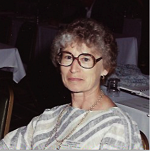 Marion Edmonds Smith Marion Edmonds Smith
July 13, 1926 - March 22, 2017
An internationally known pioneer in myelin neurochemistry
By Anne Boullerne and Joyce Benjamins
Personal life
Marion Edmonds Smith, Professor of Neurology (Research) at Stanford, died on March 22, 2017 at the age of 90. She was born on July 13, 1926 in a small town in the California Sierra Nevada Mountains. Marion was very athletic growing up and enjoyed basketball, hiking, skiing and competitive swimming. It should be pointed out that she remained exceptionally fit her entire life, taking up Pacific ocean windsurfing in her 60’s. Following in the footsteps of her grandfather, she attended the University of California at Berkeley where she received a Bachelor of Arts with honors in biochemistry in 1952, and a Ph.D. in 1956 in the laboratory of Dr. David Greenberg. Her thesis on the biosynthesis of Proline was published in Nature. While in graduate school Marion met her husband Kendric Smith, who was also working on his Ph.D. in biochemistry. They married, and after graduation both obtained positions at the Stanford University School of Medicine, then located in San Francisco. When the Stanford Medical School moved to Stanford, Marion and Kendric moved to the campus where they raised two daughters. Marion rose to the rank of Professor at Stanford in 1974, and also held an appointment as Research Scientist at the VA Medical Center in Palo Alto. Marion was not only a productive neuroscientist, but enjoyed a rich family life with her husband Kendric and her two daughters. Their mountain cabin was her favorite retreat when writing grants and papers. She was an avid bird watcher and traveled with her husband around the world on birding trips. Marion played the piano, particularly enjoying classical music and ragtime jazz. She engaged in many activities, making pottery, camping, swimming and hiking. She was an excellent cook and accomplished skier, participating in NASTAR races at the Winter Conferences on Brain Research. After retiring, she was a docent at the Cantor Arts Center at Stanford, the Jasper Ridge Biological Station, and the Stanford Memorial Church. She is survived by her husband, two daughters, and five grandchildren.
Publications
Marion published 110 papers altogether - original articles, reviews and book chapters – along with 70 abstracts for various meetings throughout the world. From 1956, her first paper in Nature no less, to 2001, her last review, she had a long, prolific, and creative career. Overall, Marion published 4 articles in the journal Nature, two as single author, 1 in Science, and all others in premier neurochemistry and cell biology journals. Few women of her time can boast such a pedigree with high impact factor journals. Marion published a third of her papers as single author, befitting a hard working investigator endowed with an independent spirit. Former trainee Alex Chiu described her as “a trailblazing neurochemist and scientist who happens to be a woman with boundless energy, can-do spirit, and innovations”. She nevertheless had a collaborative spirit and co-authored with well-known investigators, to name just a few: Lysia Forno (Parkinson Lewy bodies), Lawrence Eng (co-discovered GFAP), Joyce Benjamins (myelin biochemistry), Jean de Vellis and Robert Skoff (oligodendrocyte glia biology), Nancy Sternberger (first myelin antibodies), Jaqueline Trotter (macrophages), Steven Waxman and Raymond Sobel (multiple sclerosis).
Collaborative work and honors
Marion was very active at her University and served on many local academic committees. At Stanford, she was an outspoken force for equal treatment of women faculty, beginning with her membership on the Joint Committee for Status and Tenure of Women in 1972. Marion had visibility at both national and international levels. She served several national scientific advisory boards and several editorial boards such as Neurochemical Research (1981-1989) and the Journal of Neurochemistry (1981-1988). She was invited to NIH study sections, a recognition by peers of her expertise. She was well connected, scientifically aware of what people were doing, and always willing to share her knowledge and expertise with others. She was up to date on the literature. She once congratulated a colleague for being the first to publish when he had not realized it himself.
Marion organized many symposia and workshops at international conferences, testifying to her leadership in several fields. Marion was admired and respected by her female and male peers alike. She is widely considered part of the core of women founders of neurochemistry in the early 1960s and 1970s. She served as a role model for young neurochemists, along with Marjorie Lees (first ASN woman President) and Marian Kies (honored by the ASN award for young investigators). Marion was involved in scientific societies as well. Besides basic membership in several, she sat on the board of Directors of the Winter Conference on Brain Research (requirements are excellent scientist and good skier). Notably, she was an enthusiastic founding member of the American Society for Neurochemistry (ASN) of which she served as Secretary then became the second woman President from 1991-1993. Marion remained an ASN Councilor, a testimony to her leadership, amicability, clarity of thinking and straightforwardness. Her 2000 review “Was the ASN a Myelin Society?” is a detailed tally of abstracts across thirty years of conferences, and illustrates her fairness to set scores straight against criticism. Marion was very direct and not interested in petty politics, but was endowed with a great sense of humor. An excellent skier, she used to lure friends to the mountain tops at the Winter Conferences on Brain research, only to let them manage black diamond runs (Robert Skoff recollection). Another anecdote recalls her helping her graduate student Alex Chiu with injecting myelin basic protein when the rat kicked violently and Marion stabbed her finger, which swelled for days afterward. Several of her Stanford colleagues came to her lab in Palo Alto to take her blood for study. Marion joked that she didn’t know she was so popular among so many immunologists.
In recognition of her research accomplishments, Marion received many honors including Phi Beta Kappa in 1952, Sigma Xi in 1955, Who's Who in American Women, but above all the prestigious seven year Javits Neuroscience Award from the National Institutes of Health in 1988.
Scientific career
Early on Marion steered toward clinically relevant research from her appointments at both the VA Neurology Service and the Stanford Department of Neurology. After her PhD on Proline biosynthesis in 1956, she had a successful post-doctorate with Henry Newman, a pioneer in studying alcohol metabolism. She found the rate-limiting step in ethanol metabolism was NADH reoxidation accumulating in liver, resulting in two additional Nature papers. In 1961, with radioactivity being commonly used to trace metabolism at the time, she used C14 labeled ethanol and showed ethanol incorporation into fatty acids. The abrupt passing of Dr. Newman spurred Marion’s transition from ethanol metabolism to myelin disorders. From that point on, Marion remained focused during her entire career on multiple sclerosis, which she investigated using many models of myelin perturbation, especially the inflammatory model of experimental allergic encephalomyelitis (EAE). She was goal-driven, with the scientific insight to use her findings to change her research direction and move toward the next stage.
Marion’s logic was to focus initially on normal myelin lipid turnover, as one cannot understand a disease condition if one does not know the normal state. At the time, little was known about how myelin was generated. She first analyzed myelin lipid turnover and in 1963 published a preliminary study on the effect of fasting, since rats sick with EAE cannot feed themselves well. Marion wanted to differentiate the effects of inflammation from fasting. The following year she explored myelin synthesis in EAE and discovered that, contrary to common belief, lipid turnover was increased in this inflammatory condition. From 1965 onward Marion set to decipher myelin metabolism in vitro, and in 1969 established an original system of brain and spinal cord slices she developed from the ‘tissue chopper’ engineered by British Henry McIlwain (another stalwart of neurochemistry). Marion was hands on and remained active at the bench, endowed with a strong practical sense. She did not hesitate to abandon the McIlwain slicer when it did not work on sciatic nerves. Brain slices introduced by Marion were subsequently adopted by the glia community, since it allowed circumventing the pitfalls of precursor accessibility hampered by blood-brain and cerebrospinal fluid barriers. Brain slices allowed studying the quite complex myelination event across a relatively short period of time of 6-7 hours, allowing pulse and chase of isotopically labeled precursors. It was appropriate for looking at the synthesis of myelin during the peak of myelination, as well as selecting specific brain areas. Marion made great strides in analysis of myelin metabolism, reporting that radioactive incorporation into lipids decreased markedly with development suggesting it was directly proportional to myelin deposition. Marion pioneered studies of cholesterol metabolism in brain, and showed that the nervous system can biosynthesize much of the cholesterol, and that cholesterol is an important precursor for myelination (reviewed in 1987).
In 1971 Marion extended her studies from lipid to protein turnover in myelin, and set out to compare central myelin to peripheral myelin. She soon organized in 1972 a round table on Myelin and Myelination at the annual ASN meeting, taking the lead on the topic to clear the perception that turnover of myelin proteins and lipids could last almost a year. Contemporary studies were performed with radioactive precursors of either lipids or proteins, with half-lives calculated over 200 days for both young and old animals, although measurements varied considerably depending on a myriad of variables. Marion made a breakthrough through careful analysis that myelin turnover was faster than generally assumed at the time. The results of her pioneering studies examining the turnover of myelin in vivo and in vitro were reviewed by her and Joyce Benjamins in a chapter of the first seminal book on Myelin edited by Pierre Morell in 1977. In their conclusion, the authors stated “Myelin is not the metabolically inert membrane it was once thought to be”.
Having mapped normal myelin metabolism at both lipid and protein levels, Marion then launched a deeper investigation into mechanisms of myelin destruction. She explored more models of myelin perturbation such as tin-induced demyelination in 1973, proteolytic degradation of myelin in 1974, and factors blocking electrical conduction in EAE, published in Science in 1975. The international community was actively investigating mechanisms of demyelination as related to multiple sclerosis, except that back then the field was relatively unexplored and the study of normal glial cell biology was still in its infancy. Illustrating this state of knowledge, Marion initiated at Winter Conferences on Brain research in 1973 a workshop on Mechanisms of Demyelination, and the following year in 1974 a workshop on Neurobiology of Glial Cells. Again, Marion extended to the peripheral nervous system her studies of inflammation - experimental allergic neuritis, and proteolysis-driven in vitro demyelination. She organized a symposium on Peripheral Neuropathies at ASN in 1979, and a panel on Inflammatory Neuritis at Winter Conference on Brain Research in 1980. Her findings culminated in two book chapters in 1983 and 1984 on myelin metabolism in the peripheral nervous system, neuritis and other peripheral neuropathies. She had become an expert in myelin metabolism and its perturbations. It was time for Marion to move to the cellular level of myelin destruction and extend her investigations to the immunological side of multiple sclerosis.
In 1983, Marion made a second breakthrough in collaboration with Lawrence Eng, who had recently isolated glial fibrillary acidic protein (GFAP) in multiple sclerosis plaques. They found that astrocyte proliferation and hypertrophy appeared early in EAE, simultaneously with the first inflammatory foci, and that GFAP was not confined to lesions but overexpressed in astrocytes throughout the brain. The fairly new technique of immunostaining with Eng’s antiserum revealed a widespread GFAP increase in astrocytes, further quantified by radioactivity and immunoprecipitation. Marion was intrigued and continued investigating GFAP and astrocyte activation in connection with genesis of the astroglial scar in multiple sclerosis plaques. She was one of the first to investigate the role of other cells, besides myelin-making oligodendrocytes, in the pathogenesis of inflammatory demyelination. In 1978 Marion had already started studying myelin proteolysis using lymphocytes from EAE, and in 1980 published a book chapter entitled “Protease inhibitors and the suppression of EAE”. She clearly understood the potential therapeutic relevance of her investigations and was already doing translational research. Marion focused early on the role of macrophages in demyelination. She reported that myelin antibodies increased uptake (opsonization) and metabolism of CNS myelin by cultured macrophages in collaboration with Jacqueline Trotter in 1986, and published similar effects for PNS myelin with Joyce Benjamins in 1990. Marion subsequently assessed the role of cerebrospinal fluid from EAE animals in myelin phagocytosis by macrophages. In 1991 Marion extended her studies of myelin phagocytosis to microglia, the only CNS cells endowed with phagocytic properties, which clearly fascinated Marion. At her favorite conferences - ASN, Winter Conferences on Brain Research and International Society for Neurochemistry – Marion organized a symposium on Biochemistry of Microglia in 1991, a panel on Microglia: New Roles in 1992, followed by a workshop on Microglia in 1993. Marion sat on the National Multiple Sclerosis Society Advisory Committee on Fundamental Research from 1982 to 1996, virtually until retirement. She remained intent throughout her career to study demyelination, focusing on cells of the innate immune system, macrophages and microglia, true to her neurobiology roots. Her last paper was a review on microglia in 2001.
Marion was creative and energetic, enthusiastic about her research and always supportive of younger scientists. Her graduate student Alex Chiu (1996) wrote in an issue honoring Marion: “For the lucky ones who know Marion well, her warmth, knowledge, and integrity complete a persona that is close to the ideal scientist.”
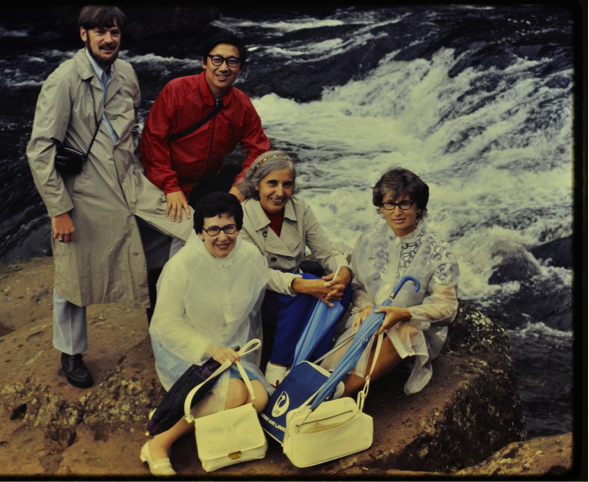 From left to right: George de Vries, Larry Eng, Marjorie Lees, unidentified woman, and Marion Smith at a 1973 Kyoto conference. Marion Smith at ASN meeting, husband courtesy. From left to right: George de Vries, Larry Eng, Marjorie Lees, unidentified woman, and Marion Smith at a 1973 Kyoto conference. Marion Smith at ASN meeting, husband courtesy.
References
Benjamins J.A. and Smith M.E. (1977) Metabolism of myelin, in Myelin (P. Morell, ed.) Plenum Press, New York, pp. 233-270.
Chiu A. (1996) Foreword. Neurochem. Res. 21, 393-394.
Rawlins F.A. and Smith M.E. (1971) Myelin synthesis in vitro: A comparative study of central and peripheral nervous tissue. J. Neurochem. 18, 1861-1870.
Seil F.J., Smith M.E., Leiman A.L. and Kelly J.M. III (1975) Myelination Inhibiting and Neuroelectric Blocking Factors in Experimental Allergic Encephalomyelitis. Science 187, 951-953.
Smith M.E. (1956) Characterization of an enzyme reducing Pyrroline-5-Carboxylate to Proline. Nature 177, 1130.
Smith M.E. (1961) Incorporation of ethanol-1-14 C into fatty acids in the normal and alloxan diabetic rat. Nature 190, 273-277.
Smith M.E. (1963) The effect of fasting on lipid metabolism of the central nervous system of the rat. J. Neurochem. 10, 531-536.
Smith M.E. (1969) An in vitro system for the study of myelin synthesis. J. Neurochem. 16, 83-92.
Smith M.E. (1980) Protease inhibitors and the suppression of EAE, in The Suppression of Multiple Sclerosis and Experimental Allergic Encephalomyelitis (A.N. Davison and M.L. Cuzner, eds.) Academic Press, New York, pp.211-226.
Smith M.E., Somera F.P. and Eng L.F. (1983) Immunocytochemical staining for glial fibrillary acidic protein and the metabolism of cytoskeletal proteins in experimental allergic encephalomyelitis. Brain Res. 264, 241–253.
Smith M.E. (1987) The metabolism of myelin lipids. Adv. In Lipid Res. 5, 241-278.
Smith M.E., Sadler R.H., Dyer C., Benjamins J.A. and Yu A.C.H. (1990) Phagocytosis of peripheral nerve myelin in vitro. Effect of antibody. J. Neurosci. Res. 27, 298-306.
Smith M.E. (2000) Was the ASN a myelin society? American Society for Neurochemistry. Neurochem. Res. 25, 1453-6
Smith M.E. (2001) Phagocytic properties of microglia in vitro: implications for a role in multiple sclerosis and EAE. Microsc. Res. Tech. 54, 81-94.
Trotter J., DeJong L.J. and Smith M.E. (1986) Opsonization with antimyelin antibody increases the uptake and intracellular metabolism of myelin in inflammatory macrophages. J. Neurochem. 47, 779-789.
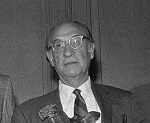 Louis Sokoloff, PhD Louis Sokoloff, PhD
October 14, 1921 - July 30th, 2015
Dr. Sokoloff, past president (1977-1979) of the American Society for Neurochemistry, died on July 30th 2015 at the age of 93. Born in South Philadelphia, Dr. Sokoloff received a bachelor’s degree in 1943 and a medical degree in 1946 both from the University of Pennsylvania. After a psychiatry residency, Louis Sokoloff began his scientific career as a student of Seymour Kety studying cerebral circulation and metabolism. In 1953 he became a member and then headed the Section on Cerebral Metabolism in the Laboratory of Neurochemistry at the National Institute of Mental Health, where he stayed until retirement in 2004. During this time he developed the 2-deoxyglucose technique for quantitative measurement of regional glucose metabolism in the brain. This led directly to the invention of revolutionary noninvasive methods for functional imaging of the human brain. Over the course of his distinguished and long career in science, Dr. Sokoloff received a number of prestigious awards including the P. O. Schmitt Award (1980), the Albert Lasker Clinical Medical Research Award (1981), the Karl Spencer Lashley Award (1987, American Philosophical Society), and the U.S. National Academy of Sciences Award in the Neurosciences (1988), just to name a few.
 Gerard M. Lehrer, MD Gerard M. Lehrer, MD
Autobiography
Gerard Lehrer, known as Jerry to his friends and colleagues, passed away Friday, April 12, 2013, after choking on apple juice, less than 36 hours following an extraordinary repair of an aneurysm at El Camino Hospital, Mountain View, California. Upon his self diagnosis of a rare dissection of the aorta, during a visit to an Emergency Room, eight days earlier, in Monterey, CA, he was treated medically, prior to his transfer to El Camino for endovascular stent graft procedure.
A graduate of the Bronx High School of Science; Phi Beta Kappa graduate of and Pell Medal recipient, City College of New York; research assistant, Columbia University College of Physicians and Surgeons; New York University School of Medicine; Instructor and Special Fellow in Neurochemistry, Washington University School of Medicine; Jerry completed residency at Mount Sinai School of Medicine under Morris Bender, becoming one of the youngest full Professors on faculty.
A scientist, Director of the Division of Neurochemistry and Neuroscience training program, Mount Sinai School of Medicine, New York City, Jerry pioneered research in multiple sclerosis, demyelinating disease, and experimental autoimmune encephalitis. A dedicated physician, beginning practice in 1960 at Mount Sinai Hospital, he was Attending Neurologist, also Co-Director of the Headache Clinic.
A past member of committees at the National Institute of Health, the Advisory Board of National MS Society New York City, and the Board of Directors, Hunger Project, Jerry was a strong supporter of community service. More recent, he served on the Board of the Monterey Chamber Music Workshop and Piano Institute, Berkeley. He considered himself a “citizen of the world.” His many interests included sailing in Maine and the Caribbean, poetry, Goethe, philosophy, the Bible, comparative religion, computer science, electronic gadgets, marzipan, biscotti, and cookies. He was a bargain shopper extraordinaire, reminding others “Anything’s negotiable!”
A Renaissance man, Jerry was a passionate lover of the arts—frequenting performances of classical music, the ballet, and the opera, at Lincoln Center and Central Park. He studied the violin in his youth, practiced performance poetry, directed and performed in theater beginning at City College of New York and soldier shows in the U.S. Special Forces in Austria, and continued in New Jersey, New York City, and in California, at the Forest and Unicorn Theatres. Born May 29, 1927, in Vienna, Austria, son of Charlotte and David Lehrer, he emigrated to New York City with his mother, when he was 11 years old. He was reunited with his father when he was 19 years old.
A senior Fellow of the American Academy of Neurology and American Neurological Association, a founding member of the International Society of Neurochemistry, a member of the New York Academy of Sciences, he authored more than 150 original articles and book chapters on clinical neurology and demyelinating disease. He is survived by his loving wife, Suzanne Macahilig Lehrer; his children, Richard and Alicia Lehrer; and five grandchildren, Max, Harry, Francesca Binder and Nathaniel and Jonathan Lehrer.
Former Senior Staff Neurologist, Veterans Affairs Medical Center, Bronx, NY, not fully retired after relocation to Carmel, CA in 1994, the Palo Alto VA requested Dr. Lehrer’s services at the Livermore, San Jose, then Monterey clinics. Fully “retired” in 1998, he began treatment of disabled MS patients on the Monterey Peninsula, California.
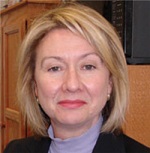 Dr. Marie T. Filbin Dr. Marie T. Filbin
1955 – January 15, 2014
A tribute to Dr. Marie T. Filbin from one who benefited.
On January 15 2014, Distinguished Professor of Biology Marie T. Filbin (1955-2014) died in her native Ireland surrounded by the love and support of her family and friends. Marie suffered in recent years from metastatic breast cancer but as a testament to her courage, commitment, and passion she continued to live her life, to work with her lab and mentor her students until her last days.
Marie was recruited to Hunter College in the early nineties having been the first to attribute a novel function to a key molecule of myelin that would turn out to be the corner stone of her successful career in neural regeneration. This molecule, myelin associated glycoprotein (MAG) was important because of the conceptual breakthrough in how spinal cord regeneration was perceived. Initially, the perception was that axons of neurons “can’t regrow”. However, seminal work by Marie showed that axons can regrow, but that there were substances released after injury that prevented it.
Marie’s scientific work contributed to our understanding of nerve regeneration after spinal cord injury and multiple sclerosis, knowledge that will be crucial for the development of effective therapies to treat these debilitating conditions. Her lab pursued inhibitors of nerve regeneration and activators of axonal growth. She was the first to identify MAG, as a potent inhibitor of nerve regeneration (Mukhopadhyay et al. 1994). Marie’s research subsequently focused on finding ways to overcome this inhibition and promote endogenous regeneration. She identified key intracellular signaling pathways that act as potent activators of axonal growth and could be exploited as therapeutic targets (Cai et al. 2001). While spinal cord regeneration remains daunting, her discoveries have led to promising results in animal models of spinal cord injury (Pearse et al. 2004).
Marie could have achieved great success at any institution, but she enjoyed teaching at Hunter College, a public institution that serves a large population of minority and female students stemming from having been historically an all women’s school. Hunter was previously known for educating two women undergraduates who went on to win the Nobel Prize in Physiology and Medicine (Rosalyn Yalow and Gertrude Elion). Marie was extremely proud of the work carried out by her students and postdocs at Hunter. Leading by example, she demonstrated that a successful scientific career and teaching at a large urban public institution were not incompatible outcomes. “Hunter is a great place for a researcher. My students are wonderful”, she told The New York Times in 2004, and again in 2005 for a profile in Nature Medicine, where she stated that at Hunter she “succeeded beyond her wildest dreams.”
Under Marie’s guidance, sixteen students received their Ph.Ds; and at the time of her death she was the Director of the Specialized Neuroscience Research Program (SNRP) at Hunter. She was also the driving-force behind the Friends of Myelin Club meetings at Hunter Biology Department, which promoted the exchange of ideas and collaborations among scientists working on myelination in the New York area. Marie was very active in numerous scientific organizations and was on the editorial board of a number of major scientific journals, including serving as senior and reviewing editor for the Journal of Neuroscience. During her outstanding career, Marie received many honors including the Javits Investigator Award from NIH, the Ameritec Prize for significant accomplishment towards a cure for paralysis, and she was inducted into the Hall of Fame of the National Multiple Sclerosis Society.
Marie was not only scientifically brilliant, but was also an extraordinary woman with a kind, caring and fun-loving personality. Generous with her time and resources, she instilled in her students and peers the importance of hard work, collaboration and collegiality. She was a devoted advocate for junior faculty and women scientists, mentoring those who like myself started their independent career at Hunter College. It was last October, during the celebration of Marie’s last birthday, that we, a group of junior faculty sharing anecdotes and our favorite “Marie’s story”, asked her about the secret to her success: “Why did I succeed? Because I was able to recognize what was important and what wasn’t” she told us. I think we all agree that Marie’s wise discernment extended not only to her science, but also to how she lived her life. She recognized the importance of “others” and cared deeply about her family, friends, students, trainees and peers. Marie was and will continue to be an inspiration for all of us. We will miss her greatly and will forever look up to her as an example of kindness, bravery and passion for life. Cheers Marie! You will not be forgotten.
Carmen V. Melendez-Vasquez
Associate Professor
Department of Biological Sciences
Hunter College
City University of New York
References
Cai D, Qiu J, Cao Z, McAtee M, Bregman BS, Filbin MT. 2001. Neuronal cyclic AMP controls the developmental loss in ability of axons to regenerate. The Journal of Neuroscience 21(13):4731-4739.
Mukhopadhyay G, Doherty P, Walsh FS, Crocker PR, Filbin MT. 1994. A novel role for myelin-
associated glycoprotein as an inhibitor of axonal regeneration. Neuron 13(3):757-767.
Pearse DD, Pereira FC, Marcillo AE, Bates ML, Berrocal YA, Filbin MT, Bunge MB. 2004. cAMP and Schwann cells promote axonal growth and functional recovery after spinal cord injury. Nat Med
10(6):610-616.
 R. Wayne Albers, PhD R. Wayne Albers, PhD
August 5, 1928 – September 28, 2013
Dr. R. Wayne Albers, Ph.D., Chief of Section on Enzyme Chemistry (retired), Laboratory of Neurochemistry in the NINDS, NIH, Bethesda, MD, died September 28, 2013. He was 85 years old and is survived by his former wife, Frances Albers, their children, Gail Morrell, Belinda Caron and Patricia Steinhoff, 6 grandchildren and 8 great grandchildren. Dr. Albers is a world-recognized neuroscientist most noted for his research in the field of membrane cation transport and neuronal excitability in the nervous system. Wayne Albers and physiologist R.L. Post at the University of Pennsylvania performed the principal experiments leading to their now widely-held Albers-Post model for the mechanism of the cation transport enzyme, sodium-potassium-activated ATPase. Dr. Albers was one of the founding co-editors of the comprehensive text, Basic Neurochemistry: Molecular, Cellular and Medical Aspects, first published in 1972, continuing as co-editor for 8 editions, the latest having been published in 2012. This text has evolved as expected over these editions with the emergence of the field of neurochemistry. Wayne’s great knowledge and understanding of the history and of the advancing field of biochemical research were key to development of the text over the past 4 decades. Wayne Albers has been regarded as a pioneering intellect in the field of nervous system biochemistry and whom, through his own research, editing and writing, has helped bring the biochemical perspective to the burgeoning modern field of neuroscience. After receiving his Ph.D. with Oliver Lowry in the Department of Pharmacology at Washington University School of Medicine in 1954, Dr. Albers embarked on a distinguished career of research at the NIH, being a founding investigator, along with Roscoe Brady, in the first Laboratory of Neurochemistry with Donald Tower as Laboratory Chief in the NINCDS.
Dr. Albers was one of the first members of the American Society for Neurochemistry at its inception and served on its Council and on Committees on Publications and Education and on Electronic Publications. He has served as Professor of Biochemistry at George Washington University, faculty member of the NIH Foundation for Advanced Education in the Sciences, and as Associate Editor of the Journal of Neurochemistry and of Experimental Neurology and on the editorial boards of Archives of Biochemistry and Biophysics, Current Topics in Bioenergetics, Journal of Bioenergetics and Biomembranes, Journal of Biological Chemistry, and Metabolic Brain Disease. Wayne Albers was considered a gentleman, an excellent scientific colleague with a keen intellect and friend by all who worked with him and he will be sorely missed, not only by his family, but also by the entire neurochemistry community.
Donations toward a memorial fund for an Albers memorial lecture or research prize may be sent in to American Society for Neurochemistry, 9037 Ron Den Lane, Windermere, FL 34786
Phone: 407-909-9064, Email: asnmanager@asneurochem.org
By George J. Siegel October 1, 2013
 Dr. George Hauser Dr. George Hauser
December 12, 1922 - September 28, 2012
George Hauser, Ph.D., Harvard Professor Emeritus of Psychiatry (Biochemistry), died on September 28, 2012 at age 89 after a long illness. With his passing, we have lost a scientist of immense talent and impressive accomplishment. George was born in Vienna, Austria and only with great difficulty and good fortune was he able to leave that country in 1939 for England and then the United States. His college years were interrupted by World War II, during which he was seriously wounded in France and endured a long recovery. In 2008, he received the Legion d’Honneur from the French government in recognition of his service in the liberation of Normandy.
After finishing his undergraduate studies at The Ohio State University, he became a graduate student in the laboratory of Dr. Manfred Karnovsky at Harvard Medical School and completed his degree in 1955. Thereafter, he was recruited by Dr. Jordi Folch-Pi to the Research Laboratory at McLean Hospital to initiate a program for study of the biochemistry of brain lipids. He remained at McLean for his entire career and served as Interim Director of the Ralph Lowell Laboratories from 1983 to 1993.
Over a 40-year period, George made many distinguished scientific contributions to our knowledge of phospholipid and glycolipid metabolism, with particular emphasis on the role of phosphoinositides in cell signaling. He was a superb colleague and a talented mentor for a succession of trainees who passed through his laboratory. His achievements in neurochemistry were recognized by award of the Austrian Cross of Science and Art, First Class and by being named a Fellow of the Japan Society for the Promotion of Science. George also served on the American Society for Neurochemistry Council, and for many years he was a Deputy Chief Editor of the Journal of Neurochemistry.
George was happily married to Louise (Russo) for more than 50 years. He will be greatly missed by her, as well as his friends and colleagues, not only for his keen mind, but for his old world courtliness, his generosity and his sly sense of humor.
 Dr. Marjorie Lees Dr. Marjorie Lees
1923 - January 18, 2012
Marjorie Berman Lees, Professor (Emeritus) of Biological Chemistry and Neurology at Harvard Medical School, died January 18, 2012 after a long illness. Marjorie was a truly unique scientist who inspired numerous people throughout her life. She was born in New York in 1923 and graduated from Hunter College. She obtained a Master’s degree at the University of Chicago and then moved with her husband Dr. Sidney Lees to Boston, where she started working with Dr. Jordi Folch-Pi, and decided to obtain a Ph.D. She was supported at Radcliffe College with one of the first NIH-sponsored pre-doctoral fellowships. Her work with Dr. Folch-Pi resulted in the discovery of a novel chloroform-methanol soluble protein in total lipid extracts of the brain, i.e., the myelin proteolipid protein (PLP). She continued studying myelin lipids and the PLP for her entire career. She spent a number of years at Dartmouth Medical School, and then returned to Harvard Medical School, first to the Biological Laboratories at McLean Hospital and later at the Eunice Kennedy Shriver Center for Mental Retardation from 1976 to her retirement.
Marjorie was a remarkable role model for many people. As was noted numerous times at her memorial service, Marjorie was determined. She accomplished whatever she set out to do. She had long-term grant support from the NIH throughout her career. She was very active in the American Society for Neurochemistry, serving on its Council, as Treasurer from 1975-1981 and as President from 1983-1985. She was Editor-in-Chief of the Journal of Neurochemistry from 1986-1989. She sequenced PLP, one of the most difficult, hydrophobic proteins, by brute force using Edman degradation, at a time when there was no DNA cloning and sequencing. When the PLP gene was subsequently isolated and sequenced, her amino acid sequence was beautifully accurate, differing only in some species-specific amino acid residues. She then moved on to investigate the role of PLP in experimental autoimmune encephalomyelitis (EAE). She was among the early investigators in the 1950s who had suggested that PLP could be an encephalitogenic protein, but those observations were overwhelmed for several decades by the extensive data on the encephalogenic potential of the myelin basic protein. Through that time, all mention of the possibility that PLP might play a role was dismissed as likely contamination of the PLP preparation with myelin basic protein. However, Marjorie was determined, and in the 1980s she demonstrated unequivocally that PLP can also be an autoantigen and a potent promoter of EAE. Further studies showed that multiple sclerosis patients have antibodies against PLP as well as numerous other myelin antigens.
For those of us who worked with her, she was an amazing mentor. We all have stories of sitting at her kitchen table or in the living room working on manuscripts. No sending computer files back and forth; one sat and worked over every sentence until it was right, or there was the realization that as beautiful as the sentence was, it didn’t fit and it was gone. She truly cared about her people and about her science. She made major efforts to support her trainees and numerous other junior investigators as they built their careers. Her wonderfully broad smile was a cherished reward for a job well done.
No mention of Marjorie’s life is complete without mention of her family. Marjorie was devoted to her three sons, David, Andy and Elliot, and always felt the loss of her young daughter Constance. She adored her wonderful grandchildren. She and Sid were married for over 60 years. They had a remarkable life together, focused both on their science and their family. A lasting memory for all of us who knew them will be their joy at discussing their science and their family.
Marjorie Lees was a determined, remarkable force of nature, who never worried about whether she could succeed. She just did it. She is truly missed.
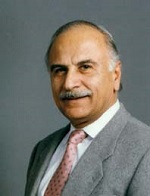 Dr. George Hashim Dr. George Hashim
1931 - June 11, 2011
It is with appreciation and humility that we celebrate the remarkable life of our good friend and trusted colleague, George Hashim, who passed away in June of 2011. George was truly passionate about his scientific pursuits and enlivened all around him with his quick wit, breadth of knowledge and keenness for a good debate. He contributed much energy, enthusiasm and leadership as a past President of the ASN and for the development of young scientists (as we ourselves were when we first met George). He formed lasting relationships with numerous colleagues throughout the scientific world, and we always suspected that his motive for developing such an extensive network was to travel and indulge with good friends wherever he was! Who wouldn’t enjoy life under those circumstances? Certainly George did.
Halina first met George early in her career when he invited her to present a lecture at Columbia University. She still remembers his graciousness as a host and his sincere interest in her presentation and ideas. Arthur remembers their first meeting in NYC when George fetched him from his hotel in his classic Lincoln convertible for the drive to Columbia University. That image of George leaning out the car window with a wink and a wry smile is indelibly inscribed and epitomized his love of life; it is one of the main reasons we all loved him and enjoyed his company. When the T-cell receptor was finally identified and sequenced in the mid 1980s, our thought was to explore their biological activity, and George, as a global leader in peptide synthesis, was the obvious choice to produce the TCR peptides. In those days, the nuances of peptide synthesis were still being worked out, and the TCR sequences posed some interesting challenges that George and his laboratory were able to overcome. The three of us teamed up to test immunological activity of T-cell receptor peptides from prominently expressed V-region genes and discovered that indeed they could induce regulatory T-cells for treatment of rats with experimental autoimmune encephalomyelitis (EAE). Remarkably, injection of the TCR peptides could not only prevent, but also reverse clinical and histological signs of EAE. George went on to show that immunization of rats with TCR peptides could also increase EAE protective antibodies. The peptide sequences that emerged from this collaboration ultimately became components of a TCR peptide vaccine that was tested with promising results in Phase I/II trials in subjects with multiple sclerosis (MS). This formulation is still in development as a possible therapy for MS. George, we hope you are listening because this story is not yet finished.
Two other of George’s lovable and sometimes laugh-inducing traits were his ability to tell a good story and his insistence that some most recent publication failed to acknowledge his earlier work. Well, the stories were endless but were always told with a positive spin and usually involved jousts with professional competitors (ie. Marian Kies of NIH) or experiences with his good friends (ie. Bernard Haber). To his friends (we count ourselves lucky to be included on this list), he was both gracious and intensely loyal. He was very supportive to us and complimentary about us to other people. He listened carefully to our ideas and could be counted on to give insightful feedback. The effect was inspirational to say the least, and gave us the confidence to believe that we could accomplish almost anything. I’m sure that many others who worked with George must have benefitted in the same way from his unselfish and supportive persona. That is not to say that George was not fiercely competitive about his scientific and personal standing. Truth be told, George did know a lot and published much on a wide range of interesting questions, and it was no surprise to us that many new findings by others had roots in his explorations. With such a fertile career, George likely did think about and pre-sage later discoveries, and we always lent a sympathetic ear to his rumblings.
We and his many other colleagues and friends will miss George a lot.
Arthur A. Vandenbark & Halina Offner
 Dr. David Colman Dr. David Colman
January 4, 1949 - June 1, 2011
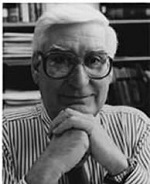 Dr. Alan Boulton Dr. Alan Boulton
1936 - November 13, 2010
We are saddened to announce the passing of Dr. Alan Boulton, a Past President of the International Society for Neurochemistry (ISN), the American Society for Neurochemistry (ASN) and the Canadian College of Neuropsychopharmacology (CCNP) and a former Chief Editor of the Journal of Neurochemistry, on November 13, 2010 in Nanaimo, British Columbia.
Alan received his PhD in 1962 from the University of Manchester and then served as an Honorary Research Fellow in the Department of Physiology at the University of Birmingham until his relocation to Canada in 1968. Upon coming to Saskatoon, he worked for the Psychiatric Research Division for Saskatchewan Health, with a cross-appointment as a Research Associate with the Department of Psychiatry at the University of Saskatchewan; he formally joined the Department as an Associate Professor in 1971. Alan quickly moved up through the ranks to the Provincial Director of Psychiatric Research and to full Professorship in the Department of Psychiatry. He was Provincial Director of Psychiatric Research in Saskatchewan Health from 1972 to 1987 and from 1987 to 2000 was Director of the Neuropsychiatry Research Unit at the University of Saskatchewan. In 1976, Alan was awarded a DSc from the University of Manchester.
Alan’s accomplishments were vast. He was a pioneer in research on trace amines such as 2-phenylethylamine, tyramine, octopamine and tryptamine and their involvement in the etiology and pharmacotherapy of psychiatric and neurologic disorders. He was recognized as a world leader in the analysis of these amines in the central nervous system, and his work on monoamine oxidase inhibitors and their effects on levels of these molecules led him into research on neuroprotective/neurorescueagents. Several of these drugs ultimately set the foundation for a commercial venture, namely the biotechnology company ALviva Biopharmaceuticals Inc. Given Alan’s many years of investigation of the trace amines, it is gratifying to see that there has been a dramatic resurgence of interest in these neurochemicals in the past decade with the discovery of the so-called “trace amine-associated receptors”.
His scientific contributions resulted in Alan being made an Honorary Professor in several universities and a Fellow of the Royal Society of Canada; in 2002 he was awarded the Queen’s Golden Jubilee Medal. He was the recipient of numerous other awards, including the Heinz Lehmann Award (in 1989), the highest research award bestowed by the CCNP.
During his distinguished career, Alan published 216 refereed papers and 62 book chapters and review articles and edited or coedited 48 books. He supervised or co-supervised 21 graduate students and 8 postdoctoral fellows, many of whom have gone on to senior positions in academia, industry or government. In addition to being a prolific researcher, Alan gave yeoman service to the scientific community in general. He was a founding member of the World Federation of Biological Psychiatry as well as the CCNP. At various times in his career, Alan was President of the ISN, the ASN and the CCNP. He was on the editorial boards of numerous journals and served as Chief Editor of the Journal of Neurochemistry for 5 years and Series Co-Editor of the book series Neuromethods for 20 years. Despite his busy schedule, Alan still found time to give voluntary service to support local and provincial organizations for various sports. He will long be remembered by his many friends and colleagues for his unbounded enthusiasm and his dedication to the scientific community locally, nationally and internationally.
Alan is survived by his wife Anne, 3 of their children, 7 grandchildren and 2 great-grandchildren.
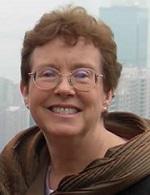 Celia Campagnoni Celia Campagnoni
February 24, 1941 - June 17, 2010
It is with great sadness that we note that Celia Campagnoni died June 17, 2010 in Los Angeles CA. Celia was an important investigator in the myelin field for over 40 years. She collaborated with her husband Tony Campagnoni throughout that time, first at the University of Maryland and later at UCLA, and they were a remarkable team. Celia received her MS at the University of Washington in physical chemistry, and then worked with Dr. Henry Mahler, in whose laboratory she met her future husband. The collaboration of Tony and Celia Campagnoni was extremely important for our understanding of the molecular biology of myelination, and, in particular, novel aspects of the myelin basic protein gene structure and function. Celia was remarkably accurate and precise in her research. She decided in the late 1980’s to screen cDNA libraries for all myelin basic protein related cDNAs and all myelin proteolipid protein cDNAs that could be found. This was a huge undertaking and it provided a treasure trove of new data on the expression of these two myelin genes. Only Celia could have screened for and then catalogued this group of cDNAs and dug into the sequence of the genes, which she had been sequencing herself, to identify a series of previously unidentified exons in these genes. This work led the Campagnoni team to an entirely new research area on a gene that overlaps the myelin basic protein gene, containing both unique and common exons but generating a very different protein.
Celia was quiet and steady, and she kept the Campagnoni lab organized. She was far more interested in generating the data about an exciting question than giving talks on it, and she published over 45 papers and reviews. Celia and Tony were like two peas in a pod: they always traveled together to meetings, attended the same scientific sessions, and checked out the same posters. When Tony would move onto the next poster, Celia would remain behind, ask probing questions about the poster’s content, and then discuss her thoughts with Tony. Many noted that the success of the Campagnoni group came from this wonderful mix of Tony’s communicative style and Celia’s solid research. She was highly respected for her science and for her common sense. She was so highly regarded that she was asked to run for Council of the American Society for Neurochemistry, and with her typical modesty, her first reaction was surprise. She won handily, and was a very valuable councilor for the society.
Celia loved to travel, and she and Tony spent sabbaticals in Europe, visited Asia and South America and truly loved seeing the world. When the Campagnonis entertained, which was always a gala affair, again it was a team effort by the two Campagnonis. Celia delighted in cooking wonderful baked goods and tasty dishes.
Celia was the most loyal of friends, helping many people over the years. She and Tony welcomed many colleagues from around the world to their home and lab for visits, fellowships and sabbaticals. She had a remarkable memory and always wanted to know the latest news about former students and their families. Celia loved her family, her pets, her friends, and her home. Her strength, her wry sense of humor and her intelligence will be greatly missed.
Dr. Joseph Bernsohn
1914 - January 24, 2010
Joseph Bernsohn, husband of 68 years to Norma, father of Judy Fried-Weinfeld, grandfather of Laurie Fried and Ian Fried, great-grandfather of Maya and Andrew, father- in-law to Arthur and Allison, and step-grandfather to Debbi, David and Jennifer and their families, passed away Sunday at the age of 95. Born in New York City in 1914, Joseph attended Brooklyn College while working and supporting his family during the depression. After receiving his BS degree in biochemistry, Joseph attended the University of Illinois at Champaign-Urbana and received his PhD in nutrition in 1943. In 1950 he started a job as a Career Research Scientist at Hines VA Hospital in Maywood, Illinois, where he stayed until his retirement in 1981. He also held the title of Professor in the Departments of Biochemistry and of Pharmacology at Loyola University Stritch School of Medicine, as well as an adjunct faculty member in the Department of Neurology at Northwestern University School of Medicine. Dr. Bernsohn was a well-established neurochemist, a member of the American Society of Neurochemistry, who had a long- term research interest in the biochemical aspects of neurological disorders. In 1967 he published a seminal paper titled "Aetiology of Multiple Sclerosis (MS)" in the eminent British scientific journal, Nature. There he advanced the novel nutritional hypothesis that deficiencies in the intake of essential fatty acids, in particular, the omega-3 (fish oil- derived) fatty acids, could underlie the development of this disease. It was a very prescient suggestion, given today's burgeoning interest in and knowledge of the beneficial properties of omega-3 fatty acids. Joseph was a true renaissance man with many passions. He and Norma loved their subscription to the Chicago Symphony Orchestra, as well as attending opera, theater and art museums. They travelled extensively around the world and in their retirement spent winters in Ajijic, Mexico. His family and friends know how much he influenced their lives and he is already missed. [FUNERAL INFO] In lieu of flowers, please make a contribution in Joseph's name to the Nicasa Mosaic Arts Project c/o Judy Fried, 1113 Greenwood, Waukegan, IL 60087.
Dr. Francis N. LeBaron
1922 - November 2, 2009
Francis N. LeBaron Yarmouthport Resident, formerly of Mashpee, Yarmouthport – Francis Newton LeBaron, 87, passed away on Monday November 2nd at Cape Cod Hospital. From Framingham, after graduating from M.I.T. he entered the U.S. Navy and served in the North Pacific on the U.S.S. Watts during World War II. Upon leaving the Navy, he obtained a Master’s degree from Boston University and Ph. D. in biochemistry from Harvard. Following a Postdoctoral Fellowship in England and ten years of research in neurochemistry of the brain at McLean Hospital in Belmont, he moved to Albuquerque, New Mexico to set up the U.N.M. Medical School. He eventually served as Chairman of the Biochemistry Department while continuing his research on the aging of the brain. He helped establish the American Society for Neurochemistry, published many research papers, and served on editorial boards of several scientific journals. Following retirement from U.N.M. he lived in Blue Hill, Maine for one year, where he became a certified yacht surveyor.
A dedicated conservationist and avid mountaineer, Fran and his loving wife Margaret, who predeceased him in May of this year, were residents of Cape Cod for the past 25 years. They were deeply involved as volunteers at the Waquoit Bay National Estuarine Research Reserve and the Massachusetts Audubon sanctuaries on the Cape, including setting up two of the world’s first nature trails specifically designed to introduce lichens to the general public. An avid bird watcher, he also volunteered as a warden protecting endangered species on coastal beaches.
He is survived by his son Geoffrey and daughter-in-law Heidi L. Johnson of Williamsburg Massachusetts, brother Kenneth of Sudbury, niece Margaret Pendergast of Sandwich, nephew Michael Pendergast of North Falmouth, and many loving extended family members. To celebrate Fran’s life there will be an informal gathering at Heatherwood in Yarmouthport at 10:30 a.m. on Saturday, November 21st.
In lieu of flowers donations may be made to the McCarthy Care Center of Hospice of Cape Cod or to the Massachusetts Audubon Society.
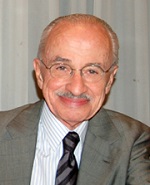 Dr. Eduardo F. Soto Dr. Eduardo F. Soto
May 21, 1927 - March 20, 2009
Dr. Eduardo F. Soto, 81, died on Friday, March 20, 2009. Eduardo obtained both his M.D. (1952) and Ph.D. (1957) degrees from the University of Buenos Aires, Argentina. After being an Associate Neurologist at the St. Mary’s Group of Hospitals in St. Louis, Eduardo was a fellow neuroscientist in the McLean Hospital at Harvard University, where he worked in the laboratory of Professor Jordi Folch-Pi. Eduardo pioneered research on encephalitogenic proteins and was particularly interested in the role of lipids and proteolipids in myelin membrane stability and in multiple sclerosis. In 1963, he returned to Buenos Aires where he assembled his own research group and began a lifetime commitment as an educator and researcher. He rose through the ranks becoming a full Professor in the Department of Biological Chemistry at the School of Pharmacy and Biochemistry in the University of Buenos Aires, where he was honoured with the title of Emeritus Professor in 2005. He authored numerous publications, chaired a myriad of both national and international symposia and served in several scientific societies. Together with his wife, Dr. Juana Maria Pasquini, he formed one of the most prolific South American training groups in neuroscience. He mentored countless young Argentine scientists, humbly and unwittingly influencing the minds of many colleagues around the globe. We will forever miss Eduardo, not only for his sharp intelligence but also for his keen smile, extraordinary kindness, unique sense of humour and wholehearted love for the advancement of the young.
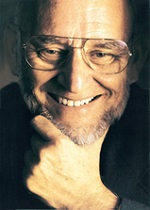 Dr. Robert Katzman Dr. Robert Katzman
Nov. 29, 1925 – Sept. 16, 2008
Robert Katzman, M.D., Professor Emeritus of Neurosciences, former chair of the Department of Neurosciences and founding director of the Shirley-Marcos Alzheimer’s Disease Research Center (ADRC) at the University of California, San Diego School of Medicine died Tuesday, September 16, at his home after a long illness. He was 82 years old.
"My only concern when Saul died was the relief that came with Bob's appointment and the feeling that our future as a department was in good hands. Bob was always appreciative of our work and a firm supporter when support was needed" commented Bob Ledeen who was at Einstein during Katzman's tenure there.
An internationally known leader in Alzheimer’s research, Katzman was instrumental in establishing the ADRC at UC San Diego in 1984, one of the original five Alzheimer’s Disease Research Centers of its kind in the country funded by the National Institute on Aging. He held the Florence Riford Chair for Research in Alzheimer’s Disease at UC San Diego from 1984 until his retirement in 1995. Katzman was also a founder of the national Alzheimer’s Association, an achievement he once remarked was the one of which he was most proud. His landmark 1976 editorial in the American Medical Association’s “Archives of Neurology” was the first to state the prevalence and severity of Alzheimer’s disease, calling it a “major killer.” He was a strong advocate for increased funding for research in the disease and, in part due to Katzman’s influence, federal funding in Alzheimer’s research grew from $5 million in 1980 to over $300 million by 1996.
Dr. Katzman was an undergraduate at the U. of Chicago and attended Harvard Medical School, graduating cum laude in 1953. Katzman’s academic career developed at the Albert Einstein College of Medicine in the Bronx, New York. He was chair of neurology there from 1964 until 1984, when he moved to UC San Diego. He received the 1960 S. Weir Mitchell Award from the American Academy of Neurology, and was a co-editor of the first neurochemistry text Basic Neurochemistry (1972), a book now in its seventh edition. His work on brain electrolytes was summarized in a book written with Dr. Hanna Pappius and published in 1972 entitled Brain Electrolytes and Fluid Metabolism.
A full biography of Robert Katzman can be found at: Dr. Robert Katzman
 Dr. Steven Pfeiffer Dr. Steven Pfeiffer
August 13, 1940 - August 26, 2007
Dr. Steven E. Pfeiffer, 67, died on Sunday, August 26, 2007 after a two year struggle with bladder cancer. Dr. Pfeiffer graduated from Carleton College in Northfield, MN and received his doctorate in molecular biology from Washington University in St. Louis, MO. He was a postdoctoral fellow with Dr. Gordon Sato at Brandeis University in Waltham, MA. For the past 38 years Steve worked as a professor of microbiology and neuroscience at the U Conn Health Center in Farmington, CT. Dr. Pfeiffer was world-renowned for his knowledge of epigenetic regulators and stages of oligodendrocyte development. Steve was a founding member of and clarinetist for the Farmington Valley Symphony Orchestra and an avid traveler. He and his wife Carol shared their love of camping with their three daughters and their beagles. He created beautiful outdoor spaces, including the woods and path around his home and a Zen garden. Steve was a mentor to countless students and colleagues and a very active member of the Society for Neurochemistry. His keen intelligence, boundless curiosity, sense of humor, optimism and compassion will be deeply missed.
For a more complete tribute to Dr. Pfeiffer go to: Pfeiffer
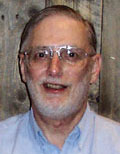 Dr. Lloyd Horrocks Dr. Lloyd Horrocks
1932 - August 18, 2007
Dr. Lloyd A. Horrocks, age 75, died unexpectedly at The Ohio State University Hospital on Saturday morning, August 18, 2007. Professor Horrocks earned his Ph.D. in physiological chemistry from The Ohio State University and worked as a Research Associate at the Cleveland Psychiatric Institute from 1960-1968 before rejoining the Department of Physiological Chemistry (now Molecular and Cellular Biochemistry) at The Ohio State University as an Assistant Professor in 1968. He was promoted to full Professor in 1973 and served in that capacity until he retired in 1992. Lloyd is best known for his research on brain phospholipid metabolism, especially plasmalogen metabolism, and on phospholipases A2 in the brain. He authored over 350 research publications, edited 7 books, and wrote 2 monographs during his career. He was the Editor-in-Chief of Neurochemical Pathology (now J. Molecular Neuroscience). He served ASN as a member of Council and on numerous ASN committees. He served on numerous editorial advisory boards (J. Neurochemistry, J. Lipid Research, Lipids, and Neurochemical Research), on grant review panels, and mentored many graduate students and post-doctoral colleagues. Dr. Horrocks was truly a gentleman who was liked and will be missed by his friends, students and colleagues.
For a more complete tribute to Dr. Horrocks go to: Horrocks
 Robert E. Jewart Robert E. Jewart
April 12, 1925 – August 13, 2007
Robert E. Jewart was born April 12, 1925, on Easter Sunday in Port Allegheny, PA. He had a passion for flying and joined the Air Corp in 1945. Just after the war, it was a great time for pilots with the startup of many small airlines. In 1951 he joined Eastern Airlines, and within one year became a Captain and then after 33 years of service retired from Eastern Airlines at Seniority #12. I am certain that many of you flew with Captain Jewart in your travels over the years. He was a man of few words yet communicated in a way that was understood and respected by every person he touched. Hunting, fishing, pruning…any activity outdoors is where you would find him. A man that was always willing to help in a way that taught you to grow and prosper for yourself. Life lessons…never a handout. He will be missed by family and friends. We wish him God’s speed on his last flight home.
ASN Members: I would like to thank all of you for your kind words, cards and support for the loss of my father. He was a giant in my eyes and I expected him to live forever. Your thoughts and prayers filled my heart and proved, once again, that ASN is indeed a wonderful family. - Sheilah Jewart
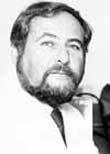 Dr. Bernard Haber Dr. Bernard Haber
July 20, 1934 - July 23, 2007
Dr. Bernard Haber passed away on July 23, 2007, after a long battle with diabetes. Bernard was a member of the faculty of UTMB from 1971 until his retirement in 1999. Bernard was Editor in Chief of the Journal of Neuroscience Research and served as liaison between the American and International Societies for Neurochemistry until his health no longer allowed it. In 2005 the ASN created the Bernard Haber Award to recognize his outstanding contributions to the development and strengthening of relationships between the ASN and other neuroscience societies. He was semi-famous for his gourmet cooking and infamous for his wild and crazy parties. Bernard celebrated life and was unforgettable to those who had met him. Contributions to the Bernard Haber Award Fund may be made in his memory. For a more complete tribute to Dr. Haber go to: Haber
| | |








 From left to right: George de Vries, Larry Eng, Marjorie Lees, unidentified woman, and Marion Smith at a 1973 Kyoto conference. Marion Smith at ASN meeting, husband courtesy.
From left to right: George de Vries, Larry Eng, Marjorie Lees, unidentified woman, and Marion Smith at a 1973 Kyoto conference. Marion Smith at ASN meeting, husband courtesy.














